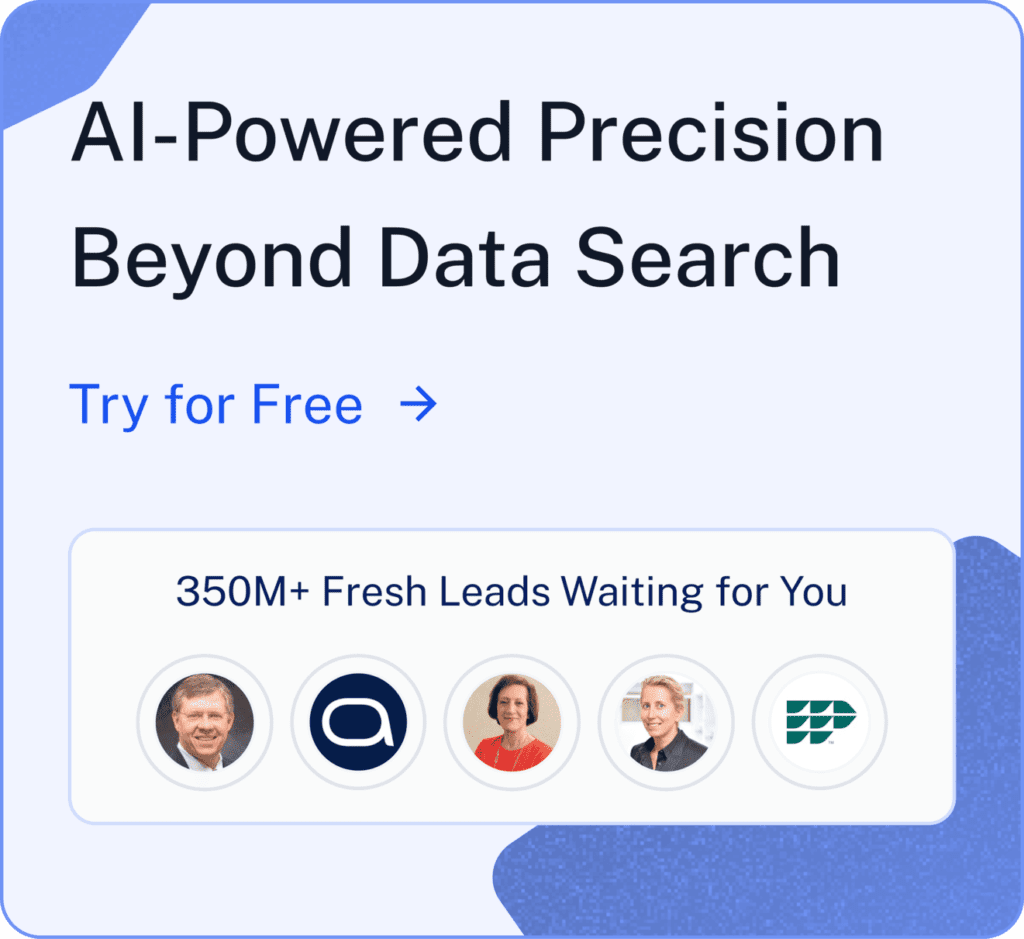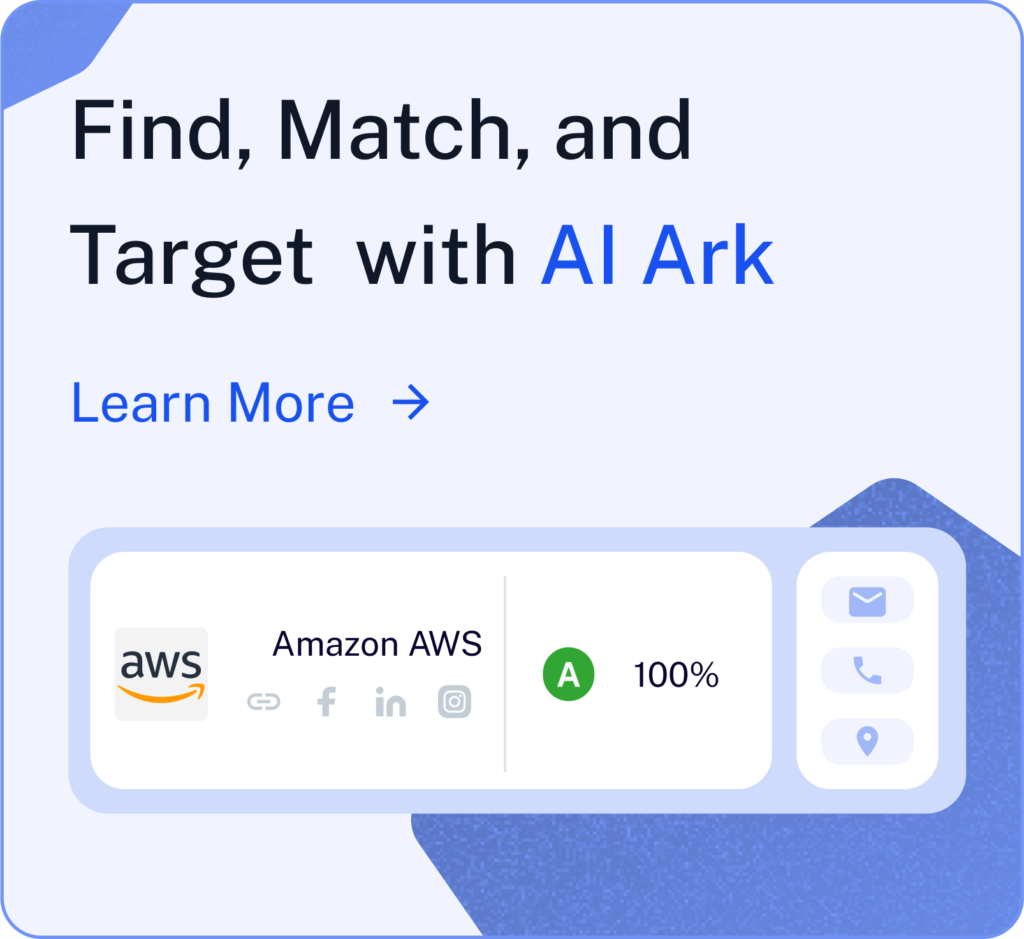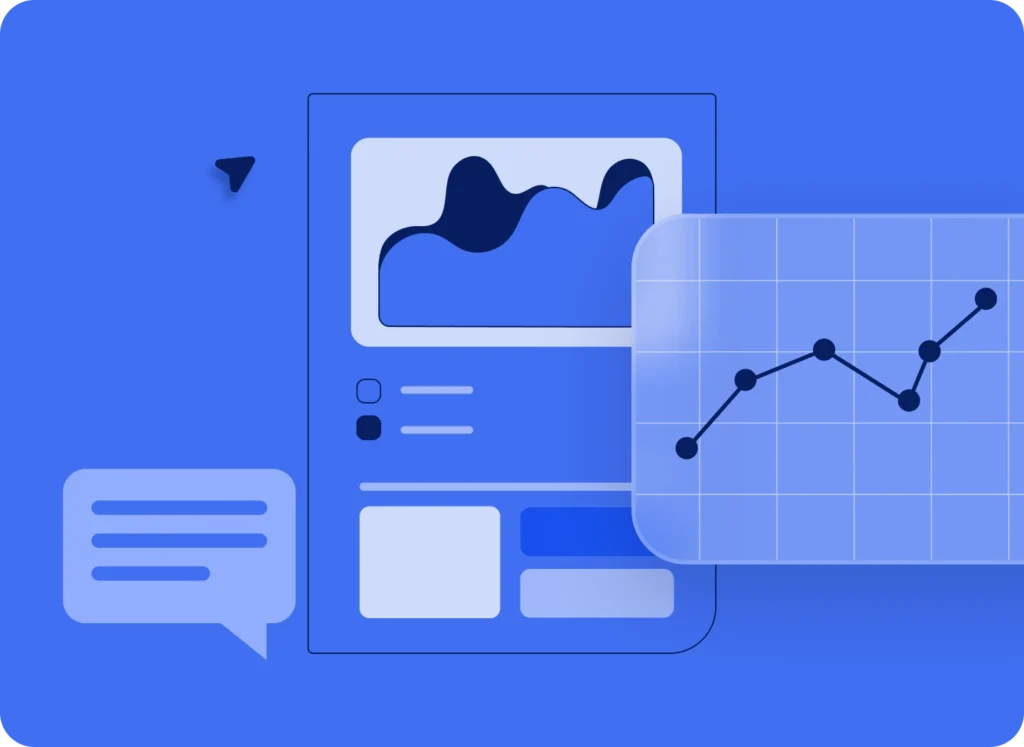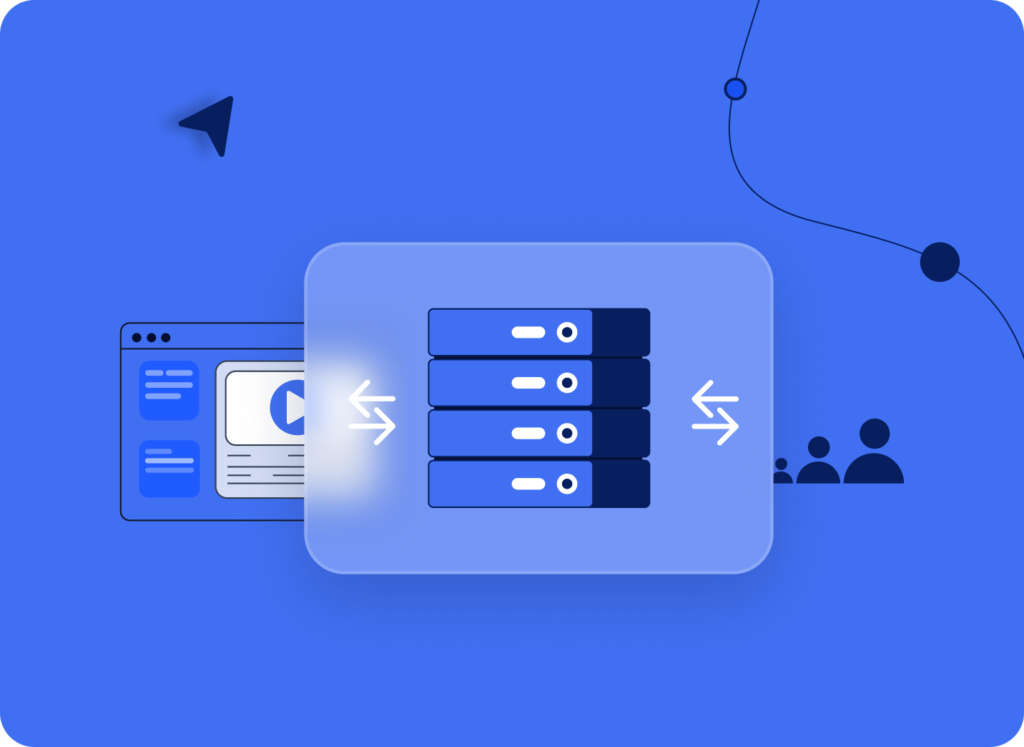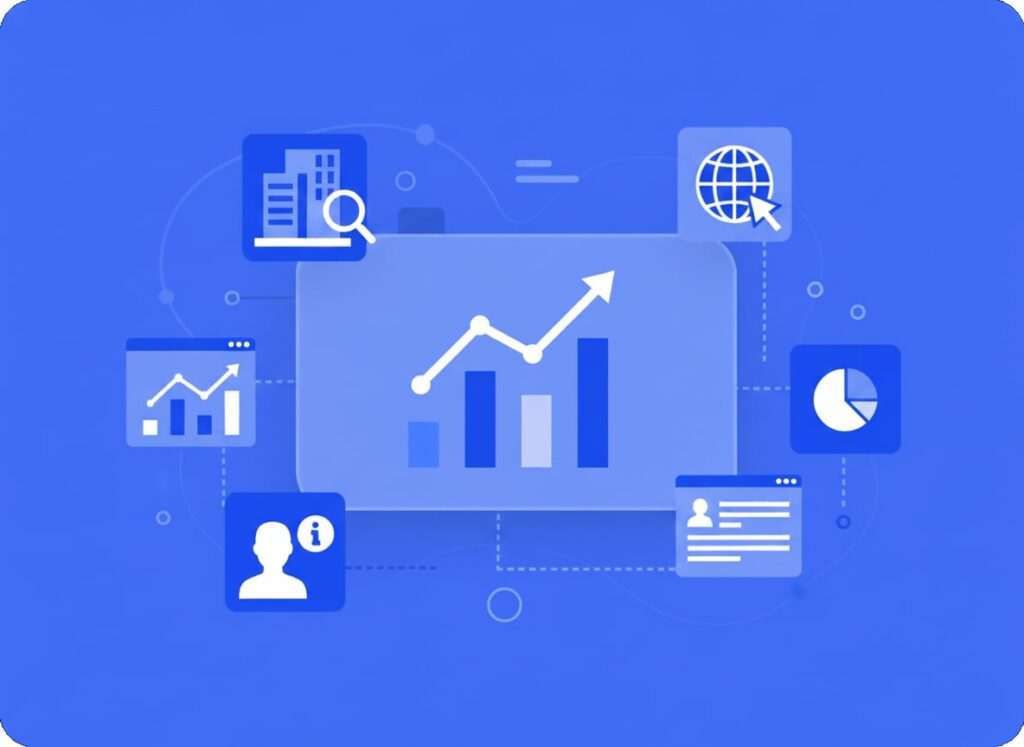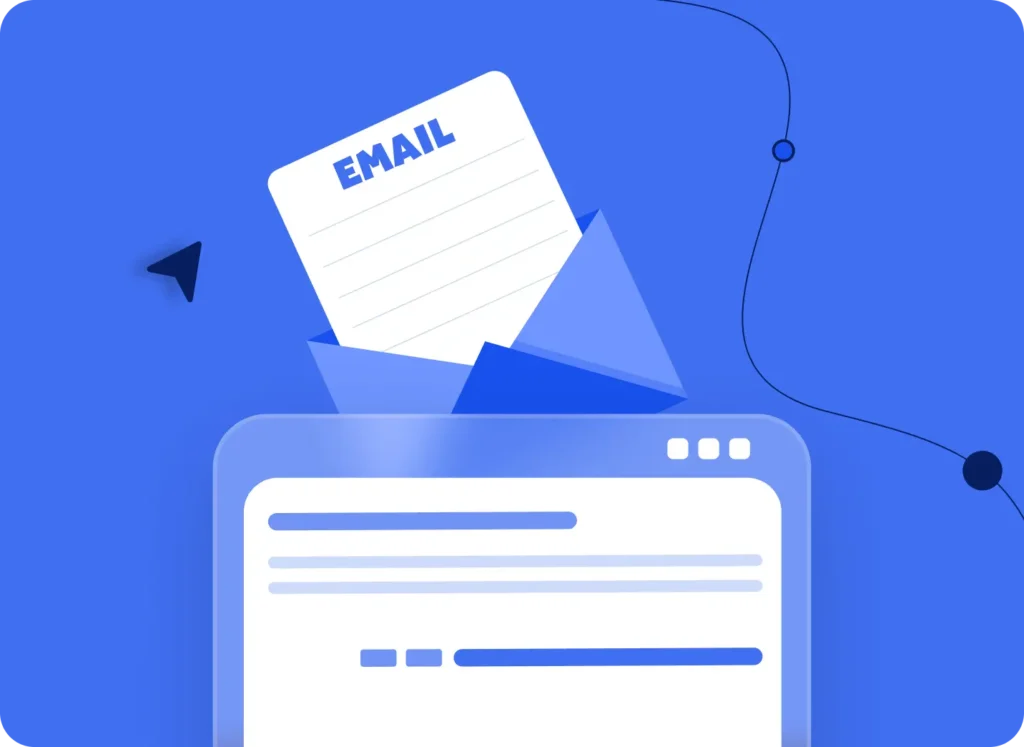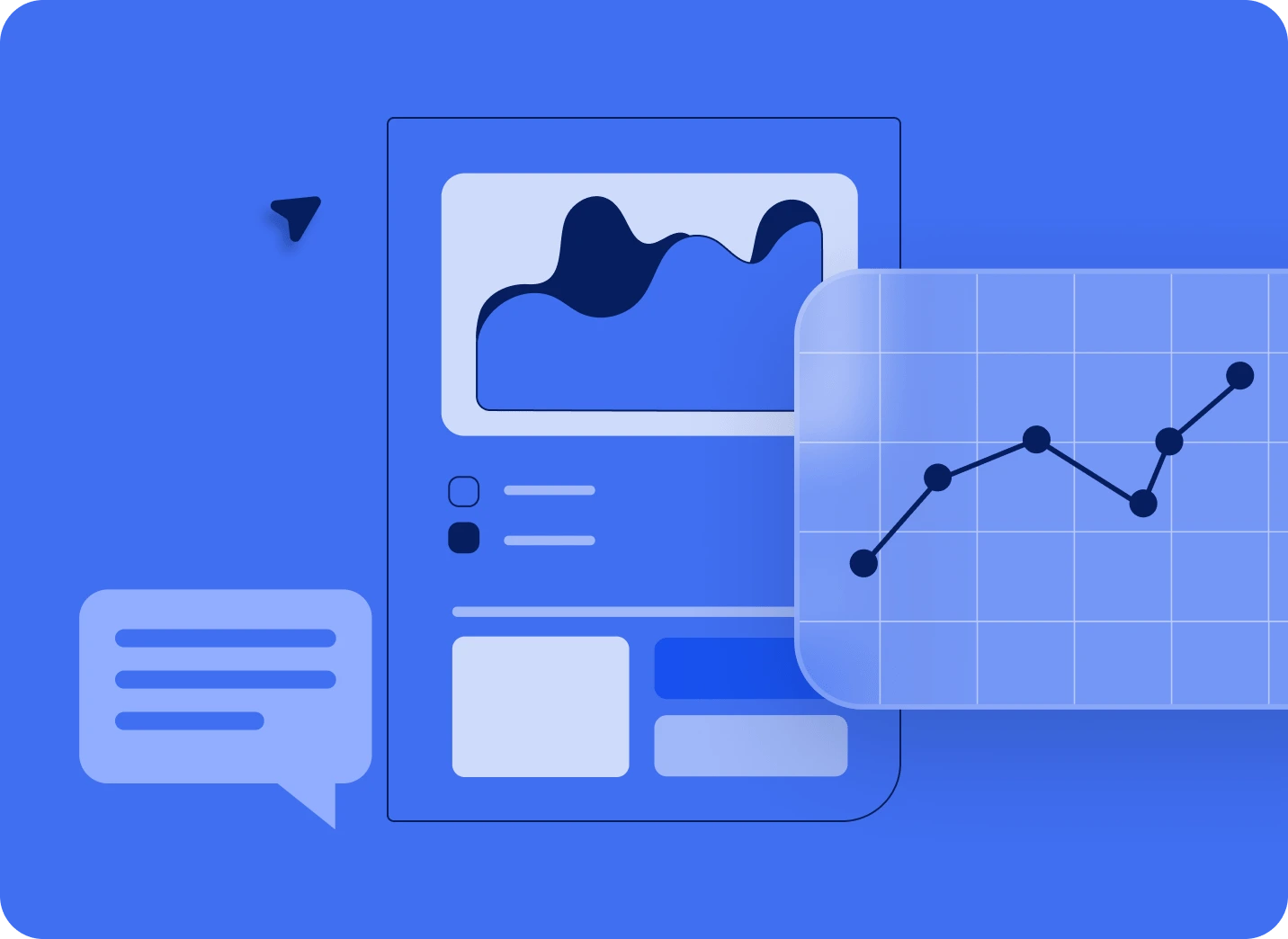Conducting B2B market research is like foraging mushrooms—you need to know exactly what you’re hunting for. One wrong pick, and instead of a gourmet treat, you’re dealing with something toxic. In B2B data, that means basing decisions on the wrong insights that can poison your entire campaign.
B2B data is the data that market research has been based on, and it simply refers to data about other businesses. This data can provide the foundation of your marketing strategies and provide you with a competitive advantage in the market. It’s important to figure out what data you should collect to extract the right insights for B2B decision-making.
In this guide we will get to the role of B2B data and how it is different from B2C data in the market, sources to use B2B data in market research, methods for collecting b2b data and various applications of B2B data in market research, this comprehensive guide is a roadmap for using b2b data in market research.
Role of B2B Data in Market Research
As markets change and competition intensifies, B2B market research is becoming increasingly vital for businesses looking to grow and stay ahead. B2B market research points out what matters most to your prospects, with the understanding that you know how to gain more customers and improve your market share.
By taking a sample of your target customers and focusing on their needs and preferences, B2B market research understands how your targeted prospects think and behave, helping you set a strategic plan to attract more targets effectively.
With B2B data for market research, you can make informed decisions that align with your audience’s needs, not creating experiences where your customers get what they didn’t expect. If you want to remain competitive and successful, staying informed is a crucial step you need to take every time.
Differences between B2B and B2C market research
Both B2B and B2C market research try to understand businesses and customers better, but they are different in approach. Let’s review some of these differences:
- Unlike B2C research that focuses on individual customers, B2B research focuses on markets and companies. Businesses, as your customers, have more complicated needs and they require more convincing than B2C customers.
- Tools and techniques that each market research uses are different from one another. B2C market research uses tools like online surveys and questionnaires, while B2B market research conducts more formal methods, such as interviews or email surveys.
- Another difference between them is the size of sample sizes for research. The sample size for B2C market research is much larger than B2B market research, since B2B research only focuses on organizations.
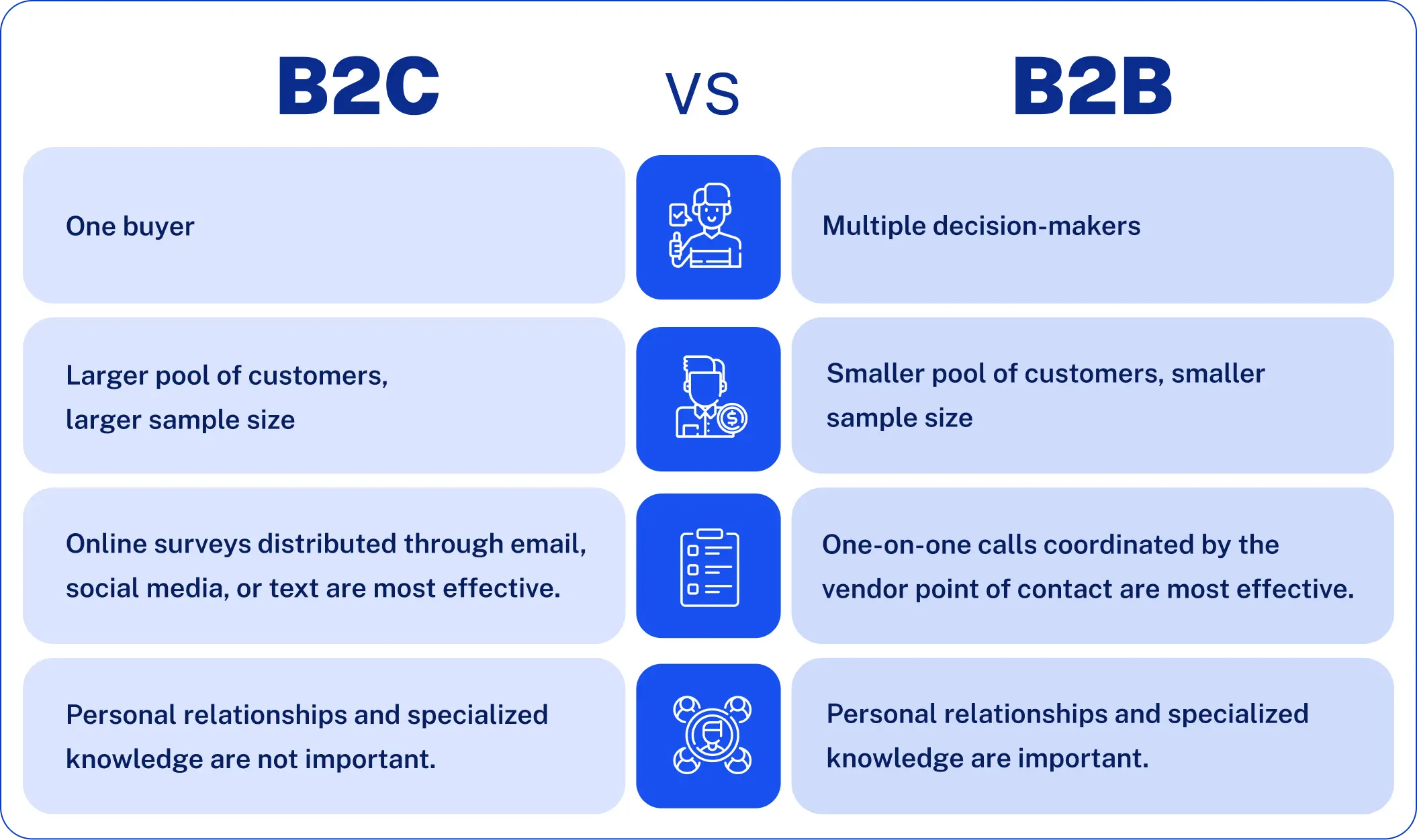
Sources for Acquiring B2B Data for Market Research
High-quality B2B data is important to start strong and effective market research; it enables us to make more informed decisions and plan more strategically. B2B data sources for market research can be divided into four groups; let’s explore them one by one:
- Public Databases and Industry Registries:
If you are looking for a cost-effective approach, going for public databases can be valuable for industry analysis, especially if you are working with a limited budget.
They offer access to detailed company filings for publicly traded companies and are useful for identifying and segmenting businesses based on their industry classification.
- Commercial Data Providers:
These data providers can offer you access to a variety of business databases and offer up-to-date information on companies. Commercial data providers are ideal for segmenting markets and scaling outreach. Most of these providers offer advanced filtering options to help you reach the right business you are targeting.
- Leveraging Internal Data:
This type of data is often one of the most relevant and actionable resources for B2B data in market research. Internal data can reflect your real interactions with customers and prospects, and by using it properly, you can gain insight into your customers’ behavior, preferences, and buying patterns.
To collect internal data, you can turn to your CRM data, your CRM can contain valuable information on your customers, or you can analyze your website with related tools to understand where the traffic is coming from and how users engage with your website.
- Web Scraping and APIs:
Web scraping and APIs can offer powerful solutions to effortlessly scrape B2B data from profiles and company pages. These resources can give you instant access to real-time B2B data and provide a more reliable way to access data.
Web scraping and APIs provide scalable access to B2B intelligence that can significantly enhance your research strategy.
In B2B market research, using a mix of sources can provide you with a strong foundation and rich insight to understand the market. Whether you are building your ICPs or identifying your buyers’ behavior, high-quality B2B data can help your strategies be built stronger.
B2B Data Collection Methods for Market Research
There are many methods to collect B2B data for market research, but it’s better to understand these ways before moving forward. The following tips can help you understand where you can get started:
Attending Industry Events and Trade Shows
Attending industry events and trade shows is one of the best methods to acquire up-to-date B2B data sets. Through this, you can build a contact list of business professionals related to your line of business and gather first-hand information and vital market data. You will have direct access to business decision-makers and even competitors. This lets you observe the market directly and build a solid network with prospective clients.
Attending industry events and trade shows will allow your business to unlock several advantages as below:
- A study shows that public speaking is among the highest-ROI lead generation channels, with 856% ROI. This can show the effectiveness of events and trade shows.
- Participating in trade shows will allow you to humanize your company and your brand to bring authenticity to your communications with your customers.
- By strategically engaging in events and trade shows, you can position your brand in a valuable community and build brand awareness.
- Engaging in professional events and shows will challenge your ideas and help you stay updated with innovations, and boost growth.
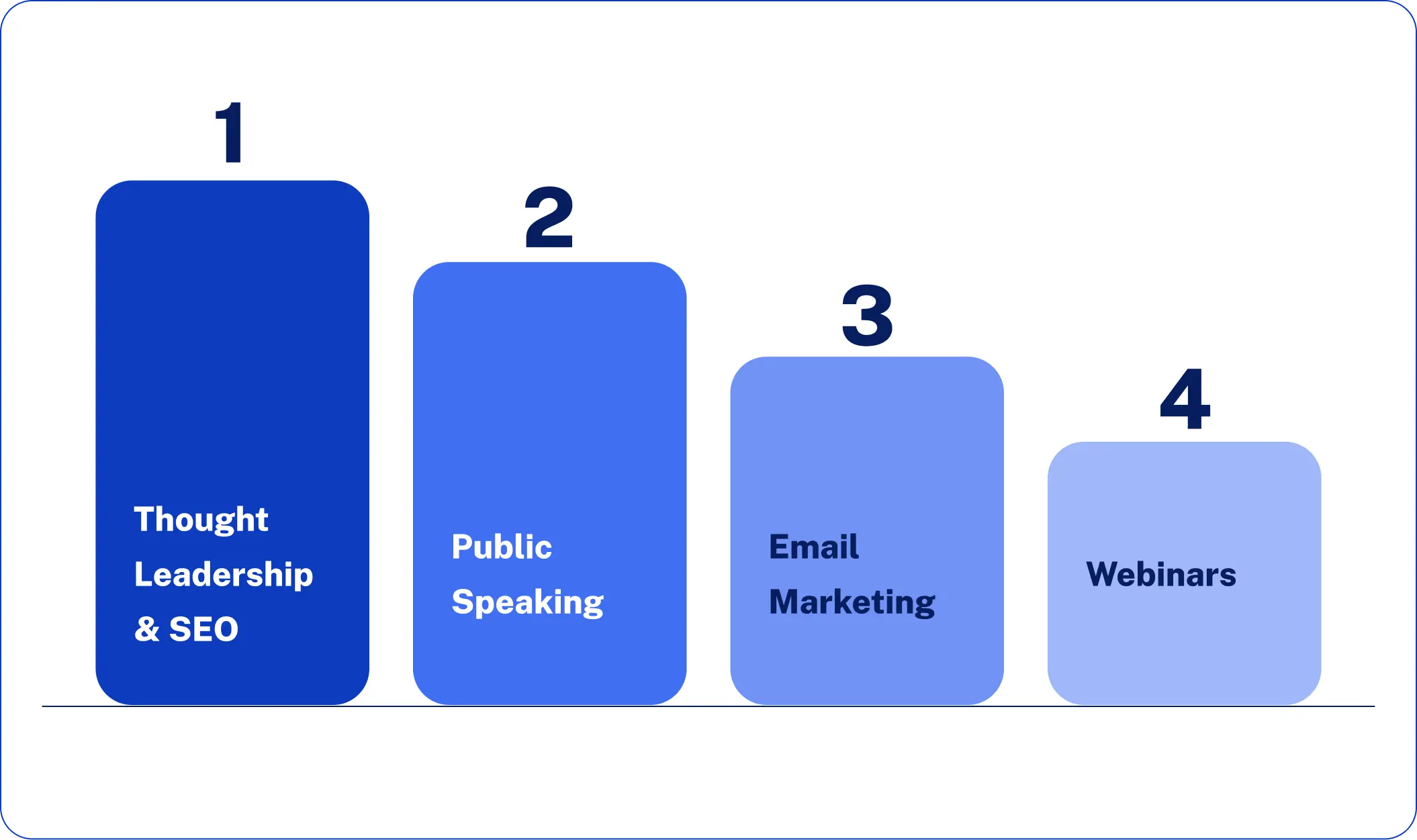
Utilizing Social Media Listening
Social media isn’t only for lead generation or brand awareness. You can use social media as a great tool for market research and B2B data collection. Through social media listening, you can review trends, conversations, and feedback in real-time; you will be able to understand what customers are saying about your brand online. This is something that surveys or questionnaires may not capture for you. If you want to start social listening to gain B2B data, you can set up a framework and start your work as follows:
- Start by setting your goals. Your goal can be increasing your brand awareness or reaching out to social media influencers. Setting your goals clear will help you set a clear strategy and approach for your social listening.
- Next, you need to select your social listening channel. Try to understand which platform your target audience is more active on, to start listening on those platforms.
- Now that you have clear goals and selected your platform, it’s time to select the right tools for listening. You can use a variety of tools to track down specific keywords, hashtags, or trends.
When you have the data collected, it’s time to analyze the collected data to drive results and try to reach your goals.
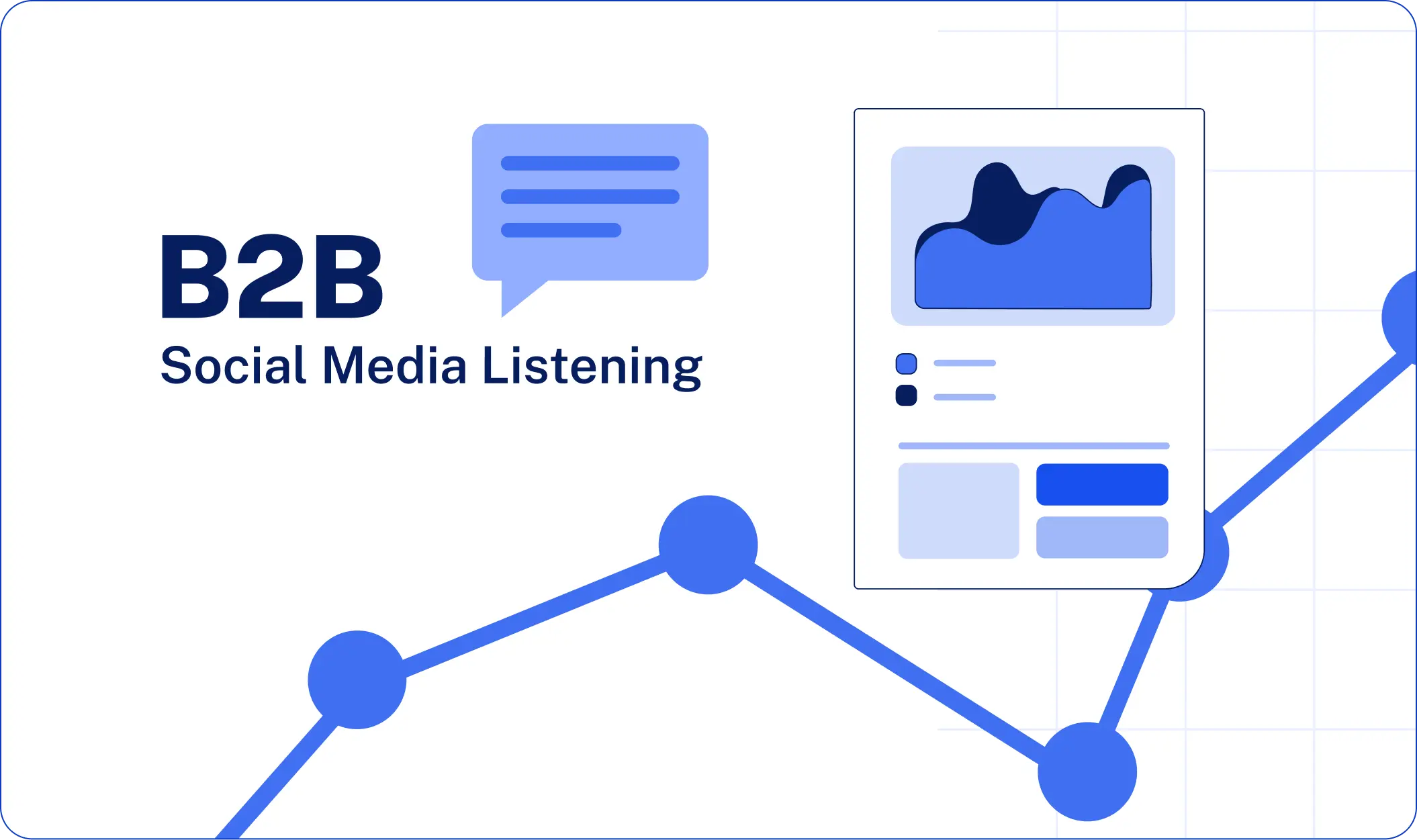
Implementing Lead Generation Forms on Websites
Your website can be an amazing tool to collect data. One of the most direct and easy ways to collect B2B data is by implementing lead generation forms. These forms will enable you to collect structured data and feed it directly to your marketing platforms. You can even capture valuable contact information through optimized forms, and a good B2B lead generation form will turn visitors into leads.
Implementing lead generation forms offers several valuable benefits, including the following:
- They can gather information about your website visitors, such as emails or job titles.
- With forms, you can qualify leads based on the criteria you desire.
- Forms can serve as a clear CTA to invite visitors to take the next step.
- By implementing forms, you can apply user segmentation and divide users into groups.
Partnering with Industry Associations for Data Sharing
Partnering with industry associations is more than creating networks; it can be a strategic method for B2B data collection.
With the help of this method, you can collaborate with associations and gain access to comprehensive industry data and reports. Here’s why making a valuable partner matters and how it may help your business:
- You get better-quality data, as shared data reduces errors and is up-to-date.
- With industry data sharing, you can access trends and innovations, leading you to identify new growth opportunities.
- Insights gained from associations can increase your revenue, resulting in market expansion.
- Having clear and aligned goals will ensure a successful collaboration and a strong partnership.
Utilizing Customer Advisory Boards
Proper use of CABs can be a powerful weapon in the data collection process in B2B market research.
CABs are the panels composed of your key customers who will provide structured and insightful feedback on different aspects of your business.
The aim of using customer advisory boards is to create a deep understanding of customer needs and their pain points. With insights from customer advisory boards, you can tailor your services more effectively and meet the market’s demands.
A strategically designed and well-managed Customer or Partner Advisory Board empowers B2B companies to achieve the following outcomes:
- Increase your understanding of how your services may benefit your customers.
- Noticing where the gaps and voids are and how to close them.
- You can gain internal alignment on how your customers’ perspectives are.
- Building a stronger relationship with your key customers.
- You can gain feedback for your new ideas or product developments.
Only 31% of B2B customers are fully engaged, leaving a staggering 69% indifferent or disengaged, making them more likely to switch to a competitor. This research shows how much customer engagement matters to B2B businesses.
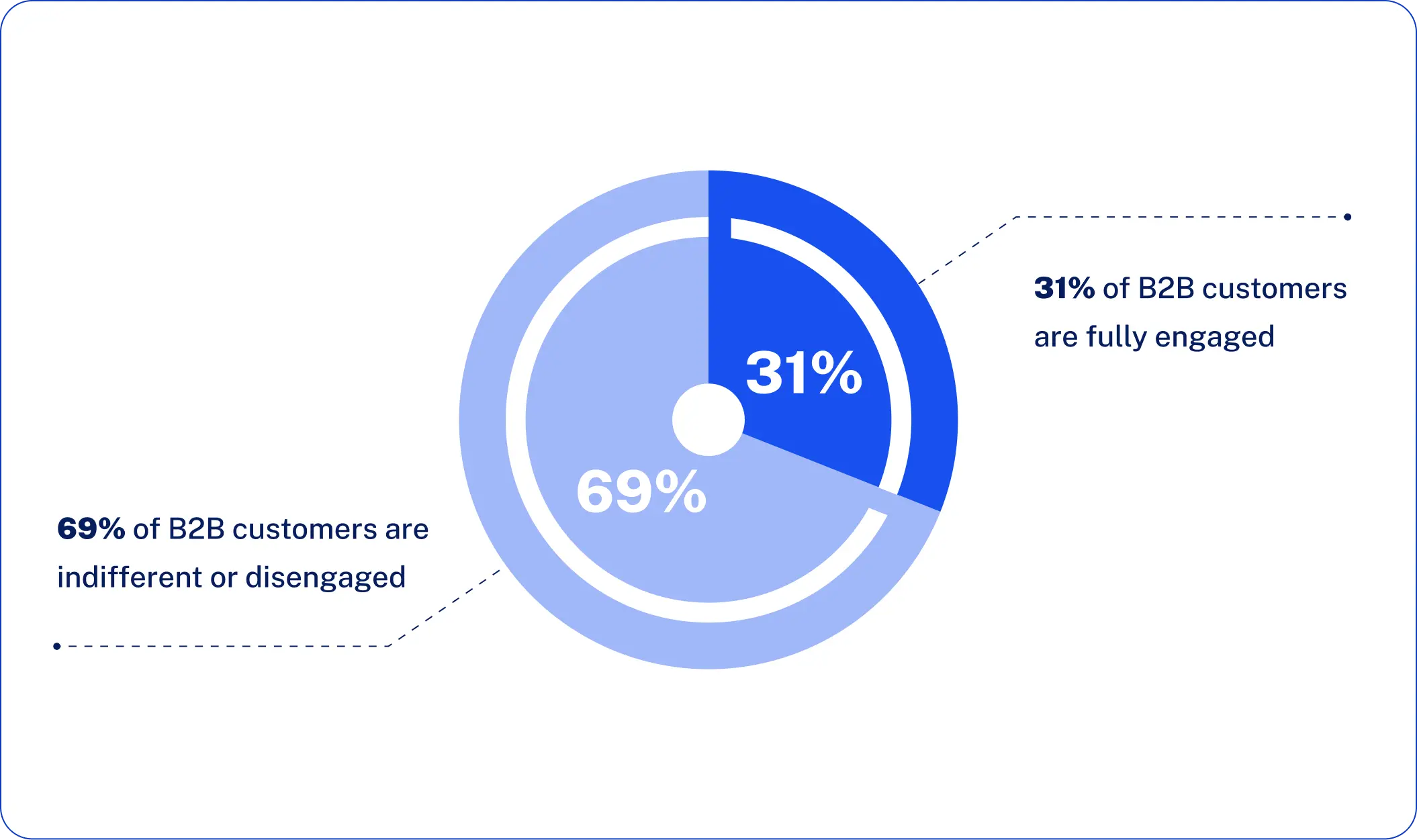
Using Third-Party Data Enrichment Services
Enriching data will help you turn raw information into actionable insights. In this process, you will enhance your existing data with additional external information.
B2B data enrichment tools reduce the amount of data management work and build your data lists more efficiently and effectively. These tools are useful when your internal data is incomplete; enrichment will fill in the blanks and allow for better segmentation and organization.
Rich data is a powerful weapon to help your business. By using third-party data enrichment services, you can:
- Clearly understand your customer needs and challenges, and enable better personalization.
- You can use the data to forecast upcoming trends for better future decisions.
- With accurate and up-to-date data, you can reduce bounce and churn rates.
Conducting Focus Groups with Key Business Stakeholders
Focus groups are a research technique to collect data through group interactions. They can deliver qualitative depth information that will lead you to qualitative insights to complement your strategies.
Group focuses with key business stakeholders can be, especially techniques for researching new products and testing new services, the interaction between the group can help you understand the matter at hand better. You can use focus groups in three ways in your research schemes:
- Stand-alone method: Focus groups with key stakeholders are the principal source of data
- Supplementary to a survey: focus groups are treated as an alternative data collection source.
- Multi-method design: Studies with multiple data collection methods function independently to provide a more comprehensive view.
Monitoring Competitor Activities and Performance
It is as important to know your competitors as it is to know your customers. Information about your competitors will signal a market opportunity. You are depriving yourself of good information without monitoring competitor activities and performance.
By finding your competition and observing their performance, you can learn their weaknesses and offer opportunities they do not have. Tracing competitors in the B2B market is a necessary move in collecting information. By monitoring and understanding your customers, you can get useful information such as:
- Monitoring competitors will enable you to comprehend and relate to market trends.
- By observing your opponent’s smartness in the B2B arena, you can get strategic wisdom and formulate robust strategies.
- Competitor analysis will help you identify new opportunities and move into market niches.
- By keeping watch over the world market, you can respond to world trends and trail behind them.
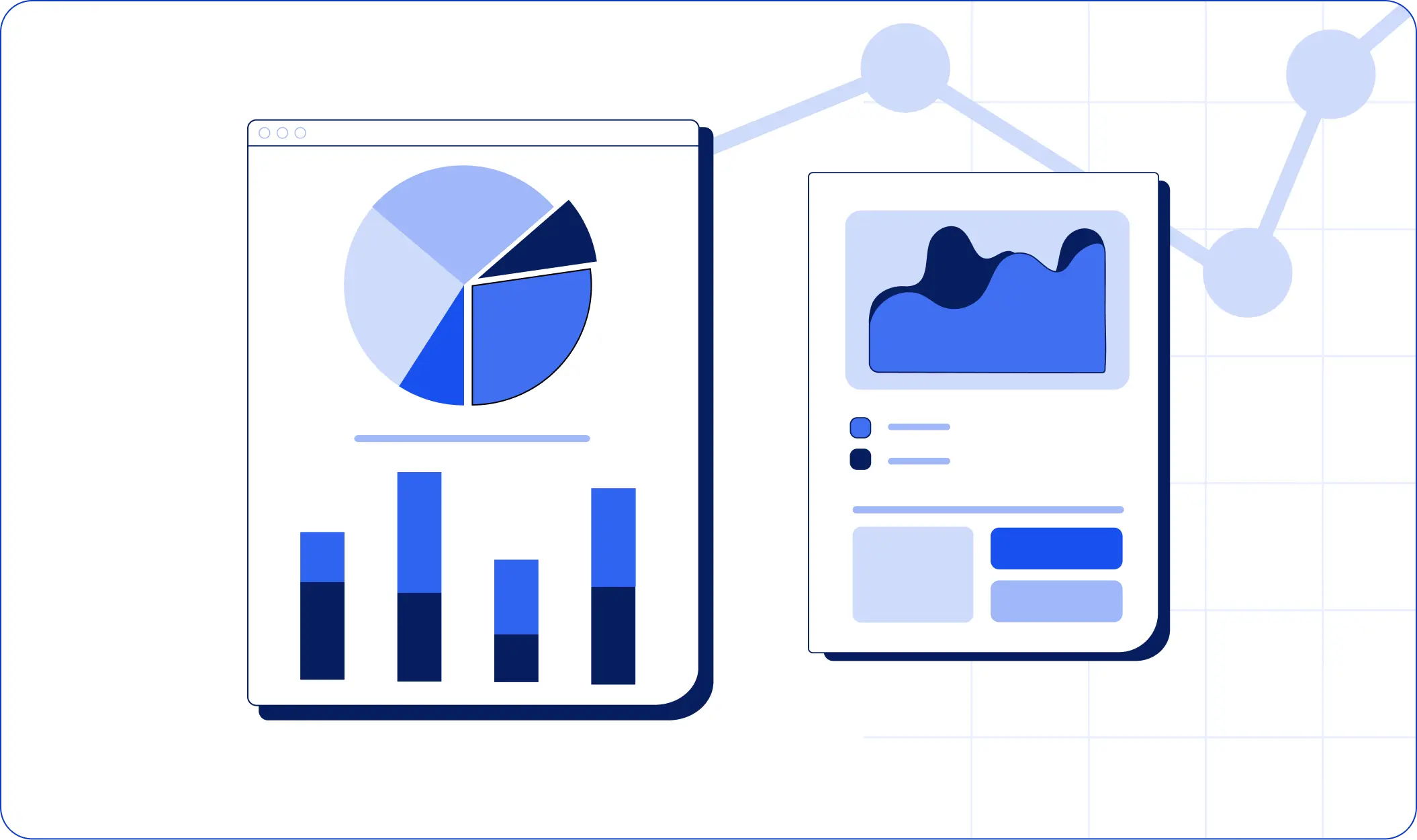
Implementing Referral Programs to Gather More Data
Referral programs aren’t just powerful tools for lead generation. They’re also a strategic way to gather B2B data. B2B decision-makers often turn to trusted recommendations when making business decisions.
To understand the power of referral groups, you can see that an impressive 84% of B2B buyers begin their purchasing journey with a referral, long before ever speaking to a salesperson. Before launching your B2B referral program, keep these key considerations in mind:
- Referred customers are important because they’re more likely to convert.
- B2B referral programs can benefit almost any business, but are especially valuable for companies operating in niche markets.
- While referral programs are often linked to B2C marketing, they can be equally powerful and effective in B2B.
- Tracking your program is key to understanding its effectiveness.
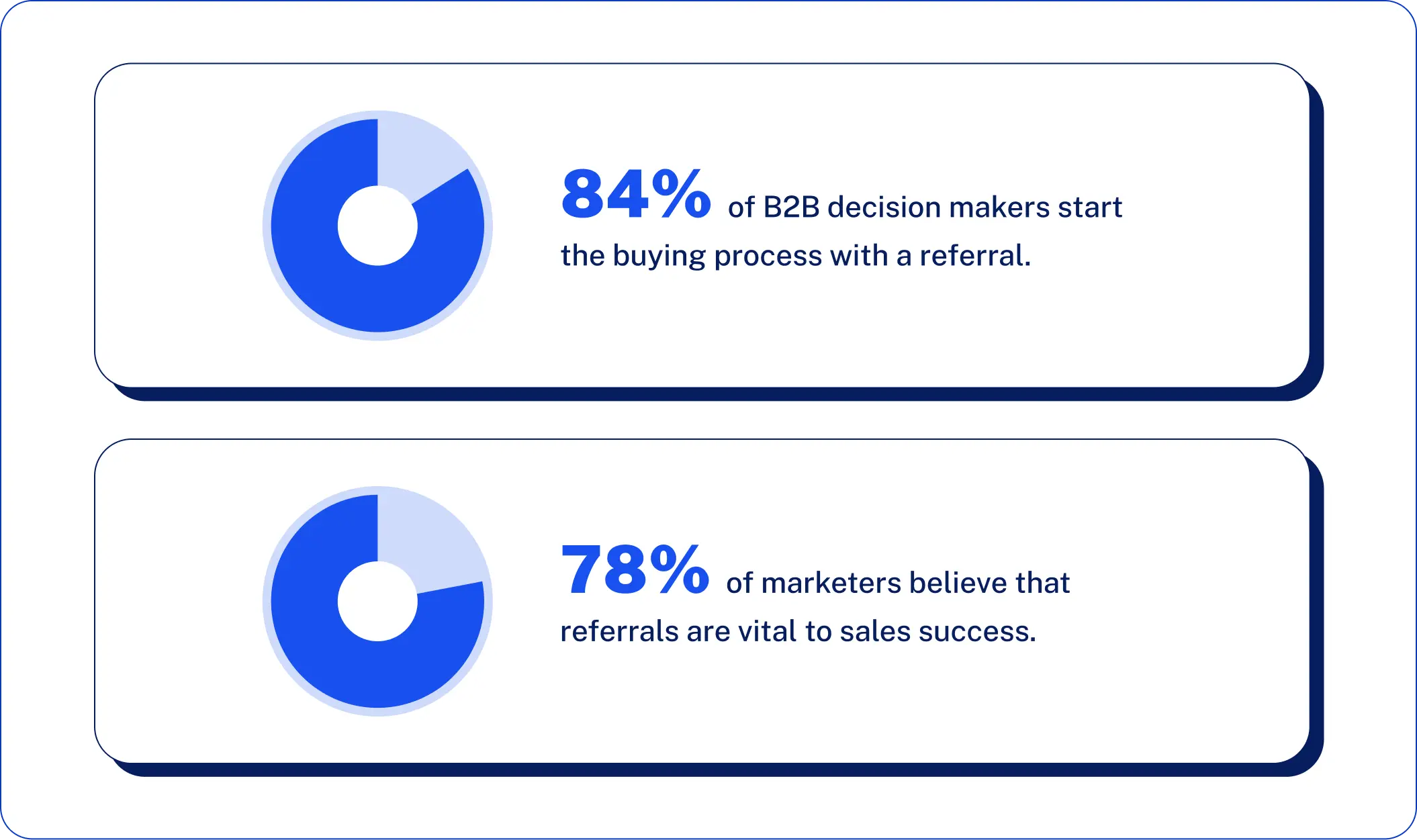
Using Content Marketing Analytics to Track Engagement
Content marketing is not just about blogging; it’s also about tracking content performance. Keep an eye on how content on your site performs to deepen your knowledge of what your audience wants to consume.
Tracking user behavior through content measurement allows your B2B company to see how your content reacts to your customers’ needs and where you should optimize your content strategy. You can measure your content against two B2B content marketing metrics:
- Quantitative Indicators: These indicators track critical indicators such as organic traffic, click-through rate, and social shares using metrics like GA4.
- Qualitative Measurements: Including user feedback, these measurements show if your content is reaching your goals, from stimulating engagement to generating revenue.
Employing Email Marketing Campaigns for Data Collection
Email marketing is not another lead generation tool, but another good source of B2B data. Email marketing campaigns target businesses or business decision-makers at businesses and offer a means to learn more about their behavior, preferences, and interaction patterns.
The insights you gather guide future content personalization, audience targeting, and campaign refinement. Using real-world evidence to create more precise communication, you can continuously optimize your strategy by leveraging data analytics on your email marketing campaigns. Here are several effective ways to collect B2B data through email marketing campaigns:
- Embedded Surveys and Polls: This can include short surveys or poll links directly within your emails to collect direct feedback on customer satisfaction, product preferences, or market challenges.
- Engagement Metrics Tracking: Monitor open, click-through, and unsubscribe rates to understand what content gets more engagement and what falls flat.
- Lead Magnet Downloads: Use content like e-books or white papers to prompt users to fill out forms. You can customize field forms to collect strategic B2B data relevant to your goals.
Event and Webinar Registrations: Emails promoting events or webinars can be used to gather data such as job roles, industry focus, business challenges, and buying intent at the point of sign-up.
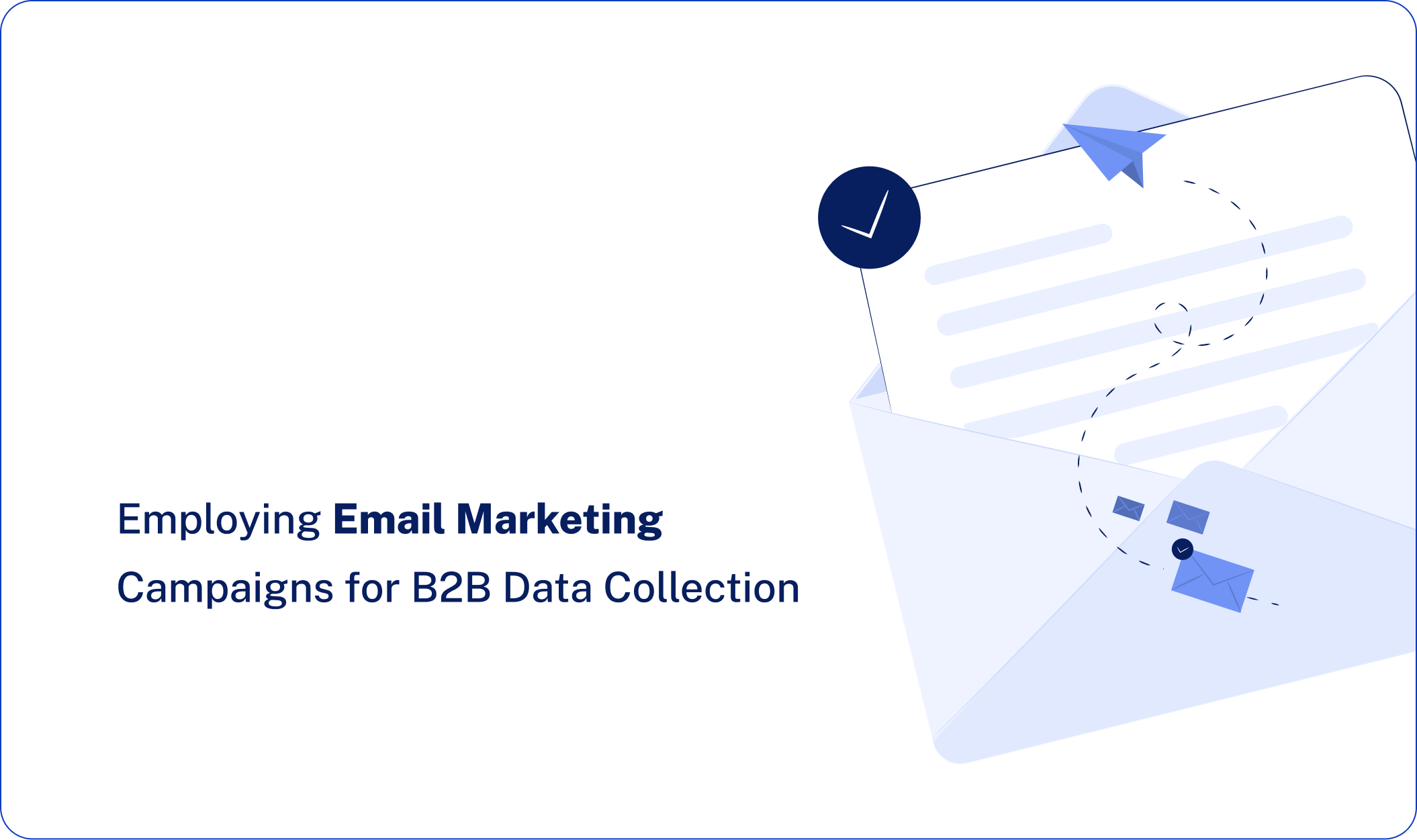
Leveraging Account-Based Marketing (ABM) Strategies
You can get detailed data collection by focusing on a list of high-value accounts. These collections will provide you with insights to define your long-term strategy. After identifying specific target accounts, create personalized messaging to address their unique needs and pain points, moving beyond communication to deliver relevant, meaningful content that boosts engagement and fosters stronger relationships with your clients. Some main benefits that using ABM strategies to collect B2B data are as follows:
- Scalability and Flexibility: Account-based marketing is flexible across industries and firm sizes, and is effective in all industries.
- Data-Driven Decision-Making: ABM relies on live data and analysis to identify high-potential accounts and gauge engagement.
- Competitive Advantage: By aligning products or services with the specific needs of high-value accounts, your business can differentiate itself from others.
- Positive Brand Perception: ABM establishes brand credibility by creating a deep understanding of target accounts’ pain points and building the company as a credible industry leader.
Implementing Web Analytics and Heatmaps
Your website is the first point of contact that you have with your B2B customers. This shows the matter of web analytics and heatmaps, try to track your website interactions to understand your users’ behavior and gain valuable insights into user intent and content effectiveness.
While these analytics and heatmaps provide insights, they don’t tell the whole story. To truly understand these analytics, you need to focus on the impact and revenue growth of important KPIs you have set for your business. With the help of B2B web analytics and heatmaps, you can reach:
- You can track how decision makers interact with your resources.
- You can monitor engagement with content and pricing pages.
- Understand your successful transactions and use the data for optimizing conversion paths.
- You can collect behavioral data and segment users based on their behavior.
Deploying Mobile Data Collection Tools
Today’s increasingly mobile and distributed business environment has made mobile data collection a game-changer. You can collect real-time data and B2B insights using mobile applications and devices.
Mobile data collection tools help your team capture and manage structured and consistent B2B data from virtually anywhere.
Mobile data collection tools offer several key benefits, including:
- Mobile B2B data collection tools help you gather data efficiently and accurately without wasting your time.
- These tools provide real-time data access, enabling instant analysis and decision-making.
- Utilizing mobile B2B data collection tools will help you spend less time on data entry and processing, reducing costs.
- These tools can be used for various applications across different platforms.
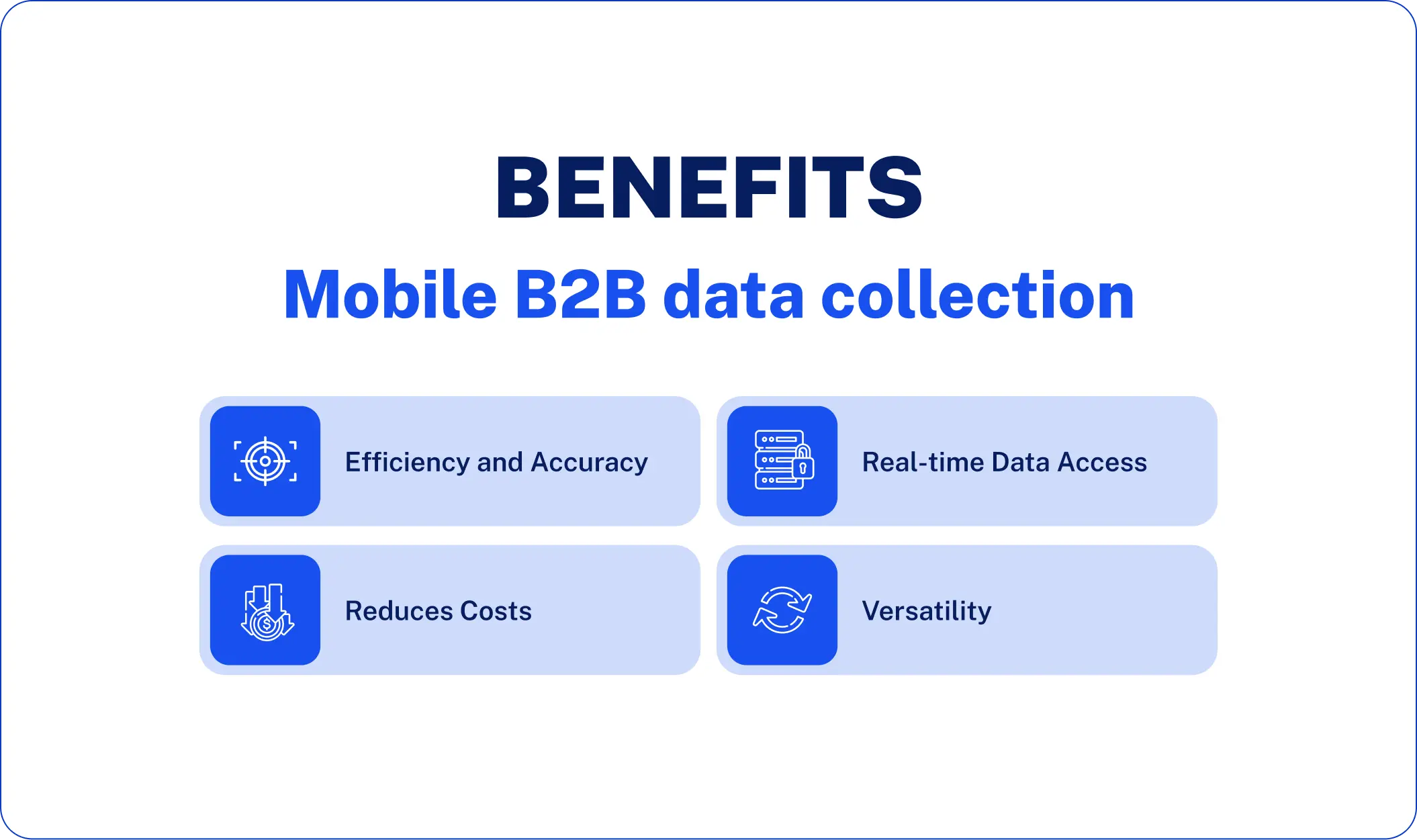
Integrating Chatbots and Live Chat for B2B Data Gathering
Nowadays, chatbots and live chats have become more than just supporting tools for B2B marketing. They’re also valuable tools for real-time data collection.
Using interactive tools on your websites isn’t optional for improved user engagement; it’s a game changer, bringing you more benefits than using traditional surveys and forms.
Chatbots can perform everyday tasks, freeing your staff to handle more complex problems. They can obtain lead information or guide customers through their purchasing process. By doing so, this can increase engagement and ultimately bring more sales. Let’s discuss closer what good they can deliver:
- Enhanced customer services: Chatbots offer 24/7 customer support and provide immediate responses. As a result, they can capture leads even outside business hours.
- Valuable data: Chatbots can collect data about customer preferences and behavior patterns, which you can later use to drive business decisions.
- Automating routine tasks: Chatbots will handle routine tasks and reduce human teams’ workload so that they can do lead qualifications before human involvement.
- Real-time analytics: Chatbots and live chats can integrate with CRMs and other analytics platforms for real-time syncing.
High-Quality B2B Data for Reliable Market Research
The value of market research is all about the value of the B2B data behind it. In the ever-changing world of B2B, with complex buying cycles and multiple stakeholders as the decision makers, high-quality b2b data is essential. You need to ensure the accuracy and relevance of your outcomes.
If you base on low-quality or poor data, it’s obvious that they will lead you to irrelevant results and wasted resources. With the help of high-quality b2b data, your business can make smarter decisions and more accurate strategies that will lead you to success.
To maximize the value of your B2B data, it’s essential to rely on trusted sources and implement consistent data quality practices. You can maintain reliable, actionable data by following these key steps:
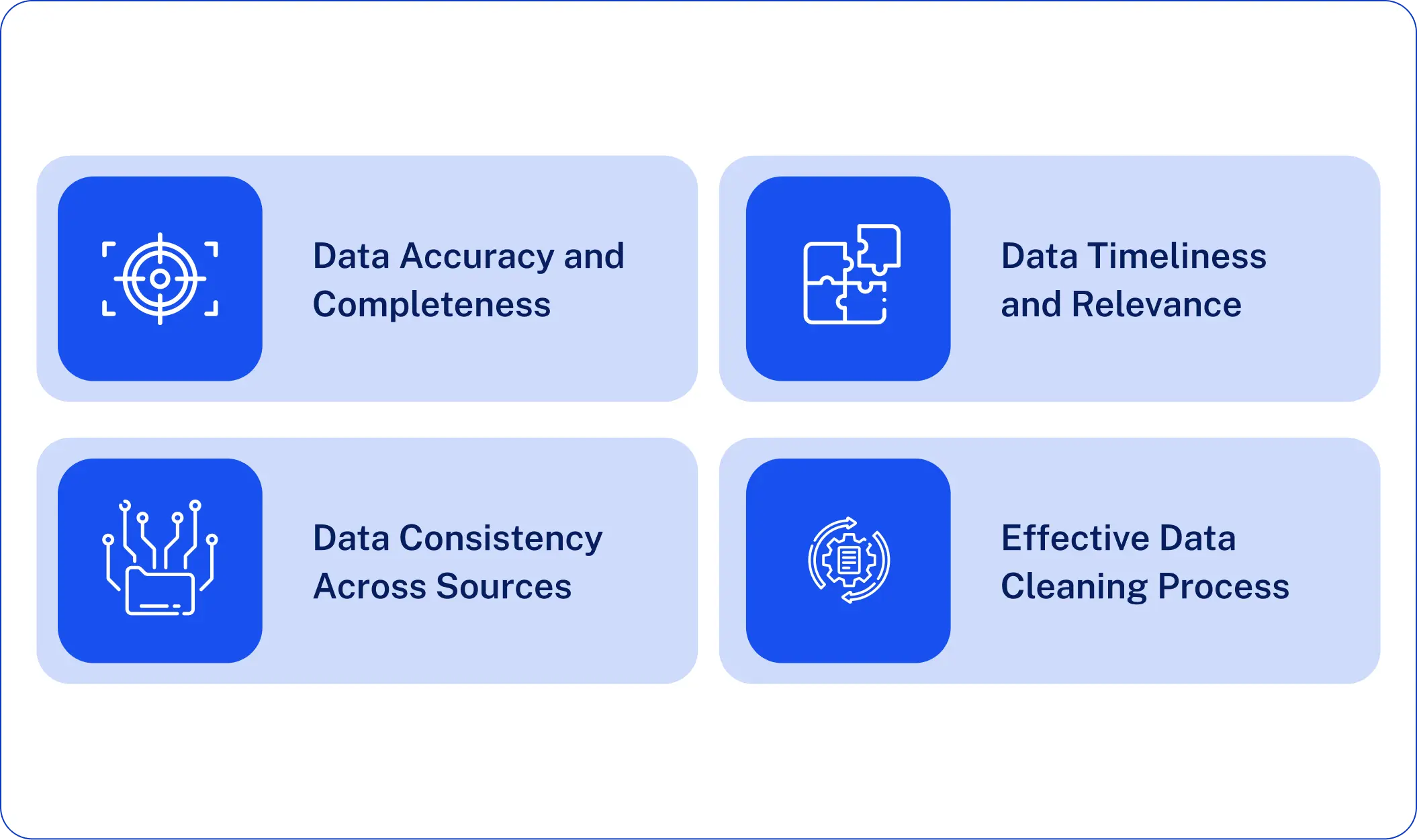
- Verify Data Accuracy and Completeness
It’s just so easy for data to go missing because it moves through multiple stages in its lifecycle, and it’s natural to happen. You need to ensure that our B2B data is complete and accurate to ensure your decision-making is effective.
You can use automated tools or even run manual checks to ensure data accuracy and completeness. You can even set data entry standards to reduce gaps or inconsistencies at the first point of your collection.
- Maintain Data Timeliness and Relevance
B2B data loses its value if it’s not regularly updated. We need to make sure the data is up-to-date and available when it’s intended to be used. If your business needs to make quick and reliable decisions, you need the most current information to be available.
To maintain data timely manner, you can start by regularly updating and reviewing your datasets. In this process, try removing outdated data to prevent future misinterpretations. Automation tools are another way that can help you streamline the process of managing your data and regularly scan your databases.
- Ensure Consistency Across Data Sources
You need to ensure that your B2B data follows a consistent format or structure. Since data may come from different platforms, the goal is to have uniform data for easier analysis and use.
Inconsistent data can cause mismatches and inaccurate results, hindering your business decision-making and customer engagement. To maintain consistency, you can start by standardizing data formats and definitions across all your platforms and implementing clear and unified data governance rules to prevent future inconsistencies.
- Implement Effective Data Cleaning Processes
B2B data cleaning will help you to keep your business data accurate and make solid decisions. Even if you have the best and richest datasets, they still need maintenance. You need to remove possible errors or reduce redundancy to make sure your b2b database stays updated and actionable over time.
To start the data cleaning process, you can start by detecting and eliminating errors and duplicate data. Correct formatting errors and update your data records promptly.
Applications of B2B Data in Market Research
After collecting your data, it’s now time to take advantage of its true value.
High-quality B2B data is essential for powering your market research process, fueling effective decision-making, and driving the development of innovative strategies that will help your business reach its full potential. Below are some of the most valuable applications of B2B data in market research.
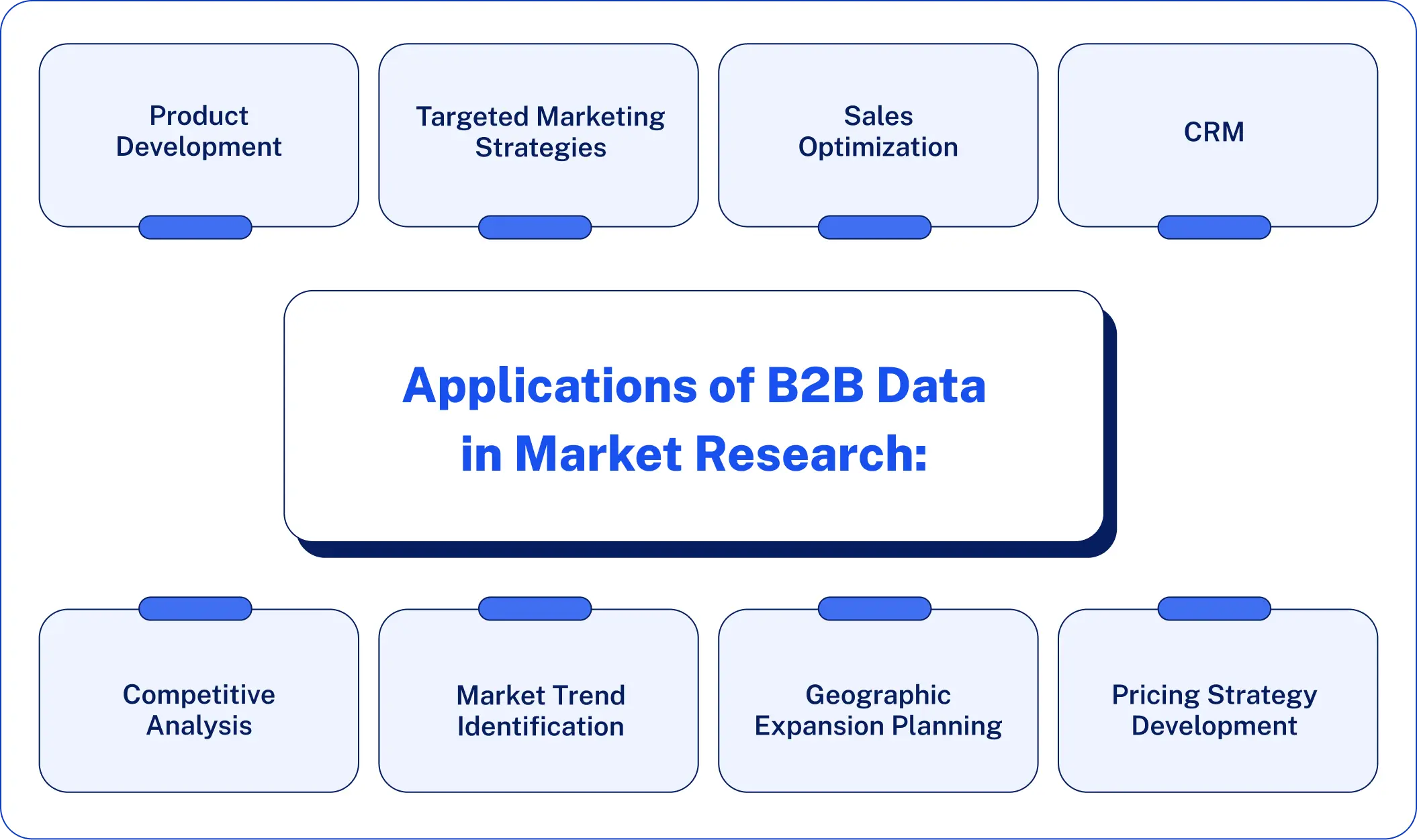
Product Development
Feedback data from your existing customers or even support tickets can help you validate products from a market view, highlight your customer needs, and gain new insights for future development or services. With B2B data, you can:
- Validate product-market fit before a full-scale launch
- Prioritize roadmap items based on actual demand
- Tailor your product positioning to resonate with your best-fit customers
Targeted Marketing Strategies
Another valuable application of B2B data in market research is enabling you to create targeted marketing strategies. Instead of launching generic campaigns that run forever, you craft strategies that will speak directly to your target audience or a specific industry segment. B2B data will help you to:
- Personalize your outreaches with dynamic content and intent signals
- Implement successful Account-Based Marketing (ABM) campaigns
- Improve conversion rates by delivering the right message to the right audience
Sales Optimization
Another important role that B2B data plays is in simplifying and strengthening the sales process. By providing accurate and rich information about leads or accounts for the sales process, your business can improve productivity and optimize the sales cycle. Your sales team can use this data to:
- Prioritize most likely leads based on their behavioral signals.
- Personalize outreach methods using insights and previous interactions.
- Reduce time spent on cold leads by focusing on accounts that meet defined qualifications.
Customer Relationship Management (CRM)
For maintaining an effective customer relationship management strategy, quality B2B data is necessary. It enables a business to store precise customer information and understand and predict the customer’s behavior. Using B2B data for CRM, your business can:
- Segment customers by behavior, life, or business profile for targeted engagement
- Build personalized experiences, improve retention, and increase customer lifetime value
- Trigger automated follow-ups based on key actions like demo requests or product usage
Competitive Analysis
For competitor analysis, B2B data is a valuable asset every business can use. A business can stay market-leading if it is aware of the competitors’ positioning and reacts to its customers’ needs rather than relying on assumptions and incorrect information. By using B2B data for competitor analysis, you can:
- Monitor competitor activity across content, advertising, and product updates
- Track customer reviews to identify competitors’ strengths and weaknesses
- Compare pricing models, product features, and service offerings
Market Trend Identification
With B2B data, you can monitor and validate emerging market trends; whether these trends are the rise of new technology or changes in your industry priorities, identifying them early will allow you to readjust your strategy and lead to the new trends instead of just following. These B2B insights will help you to:
- Inform product innovation and investments
- Refine strategies to stay aligned with what buyers
- Stay ahead of the competition by being the first to respond
Geographic Expansion Planning
Even when a business is planning for geographic expansion, B2B data can be useful. Instead of only relying on assumptions, data-driven insights will help a company to assess a market, whether it’s ready to be expanded or not, and where the ideal territory is to expand. With the help of performance data and demographics, companies can:
- Assess economic conditions and competitive edge in specific areas
- Segment geographic markets by business size or purchasing behavior
- Predict market entry success by analyzing similar account performance
Pricing Strategy Development
With the aid of b2b data, you can establish a competitive and effective pricing strategy. It enables companies to transcend simple pricing patterns and form price decisions and strategies according to the willingness of the customer to pay for the corresponding product. Such approaches can reconcile both business objectives and customer expectations. Your company can:
- Segment pricing tiers based on company size or use case
- Experiment with value-based pricing using behavioral insights
- Refine discounting strategies based on what actually drives conversions
Providing the B2B Data You Need to Grow
Now that the importance of B2B data is clear, it’s equally essential to consider where and how you collect that data. Poor data doesn’t just waste your efforts; it hurts your business reputation and branding. This is why the need for quality data is on the rise.
Whether you are conducting a competitor analysis, setting your business strategy, or launching an outreach campaign, high-quality b2b data will support your goals.
AI Ark can deliver high-quality and reliable B2B data that you can use in your market research and drive powerful insights and confident decision-making.
Are you ready to unlock the true power of B2B data in market research?
Get a demo today and start your journey toward success!
